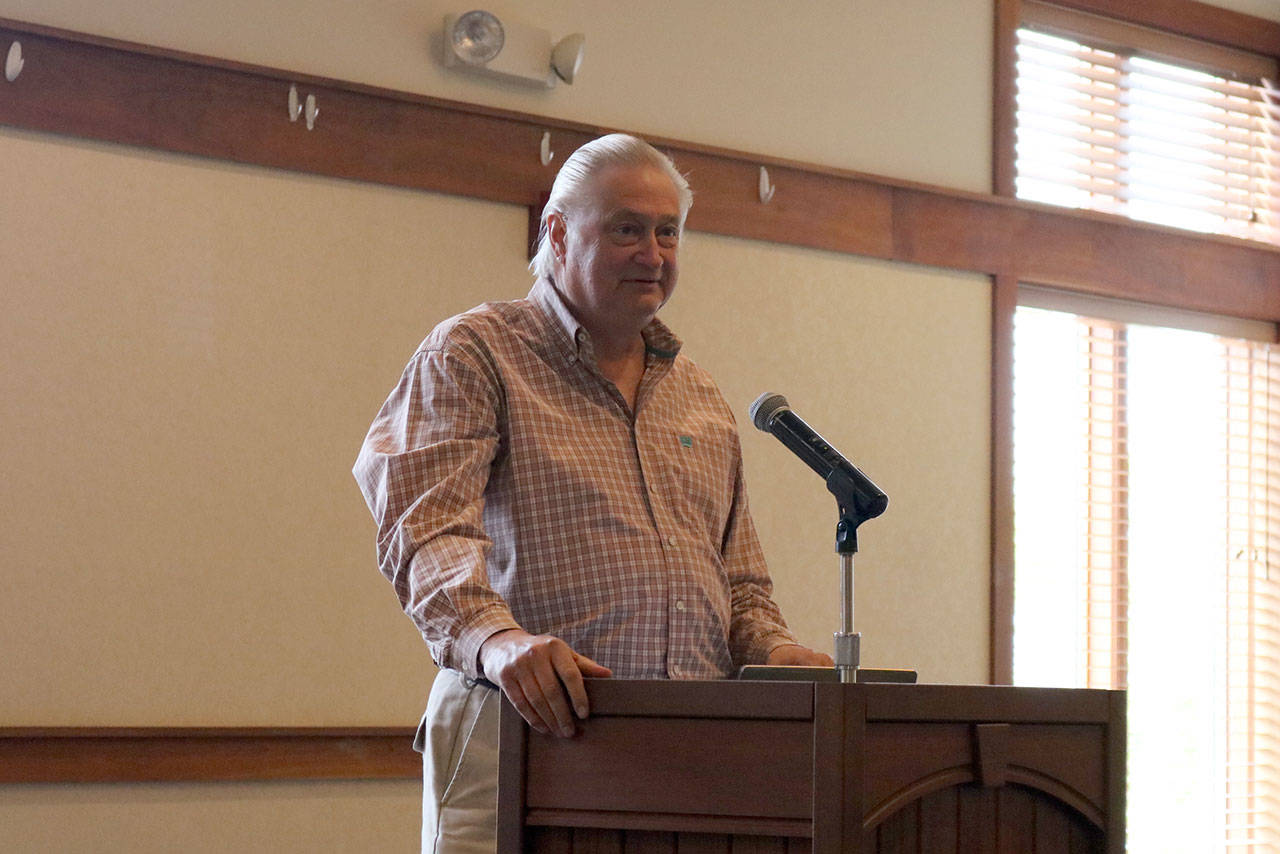Members of the Snoqualmie Valley Chamber of Commerce got a chance to ask some questions about the proposed Snoqualmie mill site development at the June 28 luncheon.
Tom Sroufe, a representative of Snoqualmie Mill Ventures and the featured speaker for the event, and gave a recap of the project and took questions from audience.
The project proposed for the 260-acre site of the former Weyerhaeuser lumber mill will focus on the wine and beer industries. In addition to wineries and breweries, the project proposes to build retail space, a corporate campus, and apartments.
The development’s intended purpose is to create more employment opportunities in the city, Sroufe said.
After covering the basics of the project, illustrated with conceptual drawings and 3-D renderings, Sroufe also addressed some of the community concerns that were voiced at the city’s scoping meeting for the project’s Environmental Impact Statement (EIS, a document required by the state to specify a project’s negative environmental impacts and the mitigation for them). Dozens of Snoqualmie citizens raised various concerns they had about the project there.
One of the biggest concerns raised was the contamination of the site with hazardous chemicals, due to Weyerhaeuser’s use of the site as a mill for decades.
The area is currently classified by the EPA as a Brownfield site, meaning redevelopment or reuse of the site could be complicated by the presence of a hazardous substances, pollutants, or contaminants.
Sroufe said that when Snoqualmie Mill Ventures purchased the site in 2010, Weyerhaeuser had completed remediation but the developers are still concerned about, and plan to further investigate, several locations.
“There are six areas where we need to do some additional investigations,” he said. “We believe they were cleaned but it was not signed off by (the Department of Ecology), and our intention is to do that. Further remediation, if required, will be conducted as part of the proposed development… any action will be done with the Department of Ecology and their guidance. They actually don’t do remediation, but they tell you how it needs to be done and when it is completed. They are the authority on this, not the EPA, so the site is stable and safe now… the environment will benefit from our development.”
Another concern brought up multiple times during the scoping meeting was the inclusion of a proposed amphitheater and the noise it would bring. Noise pollution is already an issue for many Valley residents and people were worried an amphitheater would only make the problem worse.
Sroufe said he was initially surprised by the negative reaction to the amphitheater, but understood the concern about noise, especially because citizens have expressed frustration with the existing noise from the Snoqualmie Casino and DirtFish.
“This one surprised us a little bit, we thought an amphitheater would be well received but many of you have complained about that, that there is a sense of noise saturation in this Valley,” he said. “But this is something we are going to consider in the EIS. Part of the impact statement is there will be a noise component and they will look at at least three different configurations for how big that might be. The fourth alternative would be no amphitheater.”
Sroufe also answered a variety of questions on topics such as possible businesses that might fill in the retail locations on the site, as well as traffic impacts. Tom Hawley from Mountain View Promotions asked how DirtFish, which currently operates on the mill site, would be affected by the development.
“DirtFish will continue to operate on the site until we get to planning area three, and then we will move DirtFish someplace else,” Sroufe answered. “DirtFish is a very successful operation, it’s a great brand and it’s not going away. We’ve got a couple of other ideas of where that can be.”
Regarding traffic concerns, Sroufe explained that the traffic study will not only examine the traffic increases this development could create, but also how the development will increase traffic over other proposed developments that are not yet completed.
“The traffic analysis has to take into account everything that exists, everything that’s been approved that will exist, and then add on this additional layer of traffic. The amphitheater will definitely have an impact on it, and that’s where we will see where the capacity is,” he said.
The next step for the mill site process is the completion of the EIS. Once a draft is created, anticipated by this Fall, a 45-day comment period on the draft will begin to collect additional feedback.
The final EIS will be used by the Snoqualmie City Council to make their decision on approval of the project. Sroufe hopes to have a city council decision by the middle of 2018.


